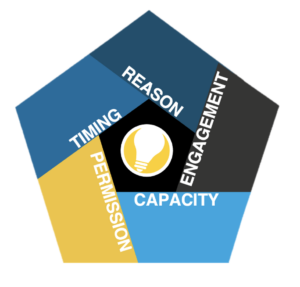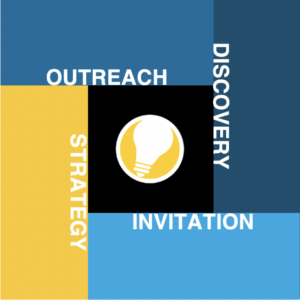We use cookies to ensure that we give you the best experience on our website. By continuing to use this site, you agree to our use of cookies in accordance with our Privacy Policy.
 Login
Login
Your Role
Challenges You Face
results
Learn
Resources
Company
Debunked Fundraising Myth: The #1 Reason People Don’t Give Is Because They Weren’t Asked


It gets posted all over social media. Featured in books. Heard at seminars. Repeated on webinars. It’s hard to work very long in fundraising without being told that #1 reason people don’t give is because they weren’t asked.
Implied in this pervasive fundraising myth is that if you just ask and ask more often, you will get more donations.
The Problem with This Fundraising Myth
This fundraising myth has profound implications for how major gift officers in particular—but also the rest of the organization—spend their time and do their jobs.
If it’s all about asking, then we just need to ask more often.
Send more emails. Mail more letters and postcards. Make more calls. Send more texts. Run more ads.
And gift officers? Get out there and get your metrics up. More meetings. More calls. More touches. Pack in more activity metrics! Ask! Ask! Ask!
But this manner of operating rarely has much to do with the achievement of actual results. Yet fundraisers have told me stories about reprimands they received for failing to achieve the activity goals assigned to them while others got encouragement and praise. Never mind the fact that the others generated substantially less donation revenue.
The most effective gift officers ask for gifts less often than most, and the reason is because they know when to ask, how to ask, and who to ask. World renowned fundraising researcher Dr. Russell James revealed in his latest book series that the top 20% of fundraisers generate 75% of the revenue. Here’s why:
“High performers ask with confidence because they understand the donor’s connection and motivations. They engage the donor properly over time, acting as their guide, providing real value and a ‘VIP’ donor experience. In that way, the top 20% play their role properly as the Sage who helps complete the story. As a result, they make foolproof asks.”
In other words, when everything is properly positioned and the donor is properly (patiently) cultivated, that’s when you should ask. And, in fact, you may only need to ask once.
However, here’s something amazing: you might not even need to ask at all.
When fundraising is done right, the donor will often ask you what you’d like them to do next.
But, if you’re spending your time asking because that’s what you need to do in order to get your activity metrics up, then you’re doing it wrong. And whoever is driving you in that direction is too!
How Do Donors Feel About Being Asked, Asked, and Asked Again?
By and large, donors have busy lives just like the rest of us. They don’t like to be bombarded and hassled with nonstop generic communications. They also don’t like to feel ‘sold’ or pressured. They especially don’t like being ambushed when they were led to believe they were just meeting for coffee to get an update.
And they most certainly don’t like feeling guilty for saying no, or uncomfortable about having to turn down a major gift request because the timing just isn’t right for them.
But this is what happens when nonprofits run with the ‘Ask! Ask! Ask!’ approach to fundraising.
And this is the single biggest driver of the growth of donations flowing into donor-advised funds and family foundations. After all, if you had the money to give but hated the experience associated with it, you’d find another way to get what you wanted, too.
So, it’s time to do away with this fundraising myth because it drives organizational Administrators to ignore the relational dynamic that lies at the heart of major gifts fundraising.
And just in case you’re new to this blog, MarketSmart works with hundreds of gift officers and nonprofit leaders. We have virtual warehouses full of data from our software. We speak on this topic from experience, not conjecture. ‘Ask! Ask! Ask!’ doesn’t work.
It drives donors away, for good. And it drives experienced fundraisers to quit.
What Matters More Than Asking
When the gift officer and the organization have effectively and patiently cultivated the donor and their relationship with them, asking feels natural, organic, and unforced.
Again, when Engagement Fundraising is employed and the methods of Dr. Russell James are utilized (taught in our groundbreaking online course based on his lifetime of research), the donor will ask YOU if they can make a gift. I wrote that again because I want you to let it sink in. It’s important that you and your nonprofit’s Administrators understand that.
How do you get to that point, or to a point where asking will feel natural to both the gift officer and the donor?
It happens when a relationship of trust and collaboration has been developed and solidified. When the donor feels known, understood, and respected, and when their own emotions around making a transformational gift have been activated.
You achieve this by first paying attention to the five metrics of ‘donor pre-qualification.’ After that, you need ‘complete qualification.’
Maybe you’ve never heard this before. This is essentially what MarketSmart’s Engagement Fundraising System delivers to overworked fundraisers who are tired of going on wild goose chases. They are told to reach out to people who have been identified but have not preliminarily qualified themselves. In fact, research shows that gift officers find that almost 2/3 of identified donors (63%) are not qualified to be in a caseload. Do you agree?
‘Pre-qualification’ might be a new concept for you. I decided the sector was overlooking this step and over-asking instead. So I developed this concept to help. It’s donor-driven! That’s why it works.

Here’s when a donor is pre-qualified for outreach:
- Timing – the supporter says the circumstances in their life are right for you both to engage more deeply
- Reason to give – they told you a compelling emotional reason to give (usually as a result of their life story/history, their values, or the people they care about)… this is their motivation and without it advancement simply cannot happen
- Engagement – they have leaned in to become an active participant, in some manner, with your organization (they volunteer, engage online, or even recently filled out a survey).
- Wealth capacity – beyond the prospect research, you know they truly have capacity because they told you (at first via survey) that they would consider giving assets, not cash (poor people don’t have assets to give!) — therefore capacity includes philanthropic intent, using my approach
- Opted in – they signaled their interest and given you ‘permission’ to cultivate them (usually via email) and reach out to them
When the donor proactively opts in to hear from you, receive materials, take calls, and schedule meetings, you know you have initial buy-in and trust. You know they want to connect with you and discuss giving, and that means you don’t have to force anything. They preliminarily qualified themselves for outreach and are positioned for a gift officer to engage in a fulfilling and eye-opening conversation about all sorts of things.
Next is complete qualification. That happens once you’ve made outreach, connected and asked the right questions (discovery), invited the donor to be included in your caseload after making it clear that that means you’ll be working on a gift together and they’ll be expected to review a serious proposal at some point, when they are ready. Plus, after they accepted your invitation, you’ve developed a strategy to help them involve themselves more deeply and learn how they can help so they gain value in the exchange of their money for some deeply desired value.

When a donor with capacity knows what path they are on, they trust gift officers more. Transparency is key here.
It’s the antithesis of Ask! Ask! Ask!
This approach is fair. It does away with ambushes and turns donors and fundraisers into collaborators instead of ATMs and extractors.
The Truth About Asking
Again, it’s an oft-spoken line to say that the only reason donors don’t give is because they haven’t been asked. But it’s a myth of fundraising.
The more accurate, though admittedly less punchy and succinct way of saying it would be this:
“The only reason people don’t give is because they weren’t asked at the right time and in a collaborative way so they can gain true value and find meaning in their lives.”
People don’t give because no one took the time to draw out an emotional reason to do so, at the right time, and at a level that matches their desire.
You can change that by employing Engagement Fundraising.
Related Posts:
- Effective Fundraising Strategy is Rooted In Fundraising Fact
- How transactional donor relationships kill generosity
- 6 Causes of Poor Caseload List Quality for Major Gift Prospects
- How fundraisers can help their cause resonate with donors
LIKE THIS BLOG POST? LEAVE YOUR COMMENTS BELOW AND/OR SHARE IT WITH YOUR PEERS!
Get smarter with the SmartIdeas blog
Subscribe to our blog today and get actionable fundraising ideas delivered straight to your inbox!

I don’t have an annual fundraising objective, so maybe I’m an outlier. I’ve had good success with leaving my donors alone, other than an occasional email or phone call to touch bases. Occasionally an email if something significant is changing at our org. When they’re ready to donate, they donate. Many have expressed to me how pleased they are that I don’t push them. So I’m quite on board with this article.
Thanks David. We need more like you, especially in leadership!
I never thought this adage meant to ask and ask and ask. I thought it meant that the ask has to fit the potential donor.
If it doesn’t fit their goals, meet their image of themselves, and be framed as something that personally touches their life, then you haven’t made an ask.
You are the tree that fell in the forest — you might have made a sound, but the donor didn’t hear you. .
Interesting perspective, Susan. Thanks for sharing.
Agree with the comments by Susan with the addition of knowing the donors and knowing when and how to ask them. Contact them on their terms.